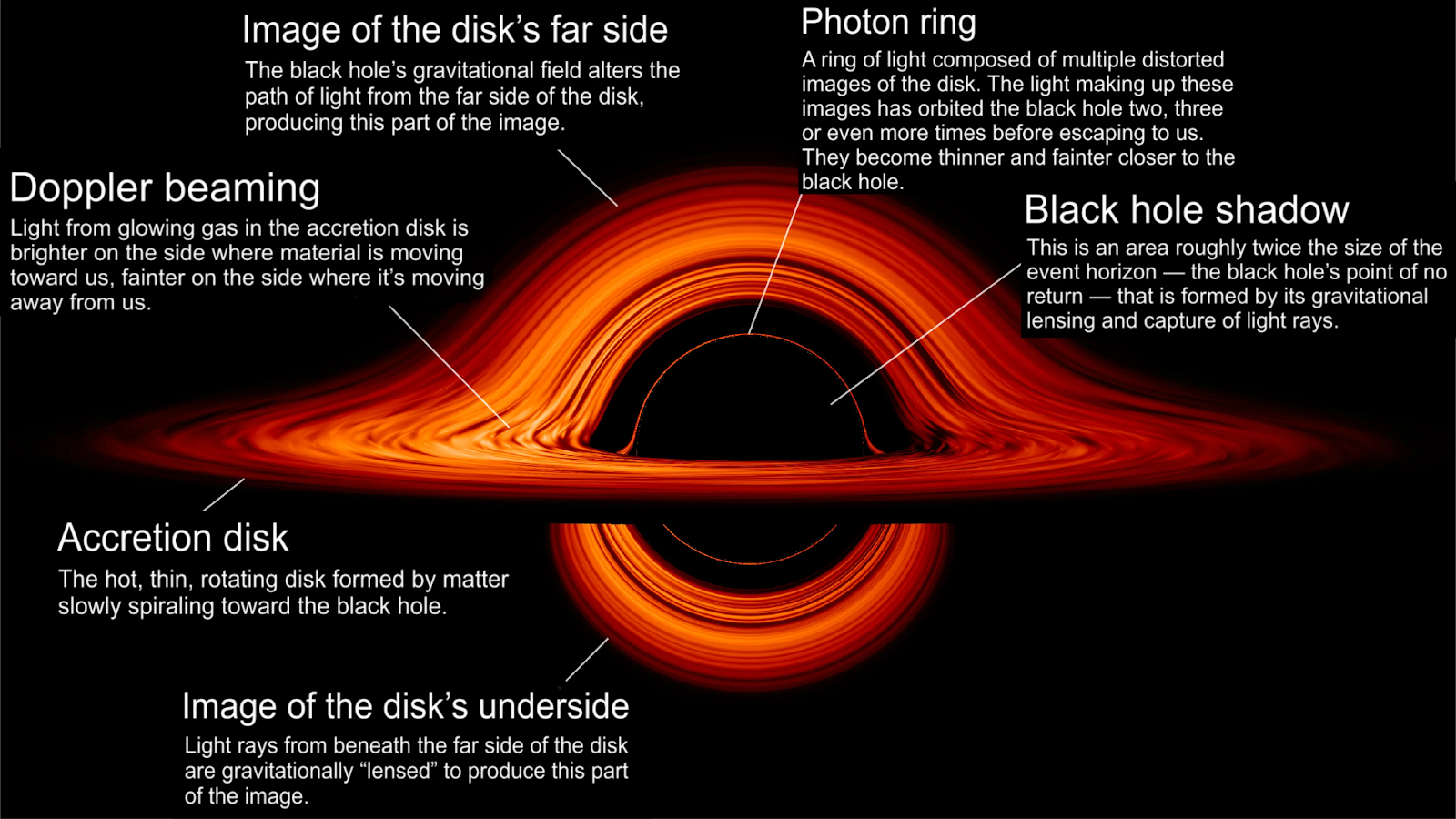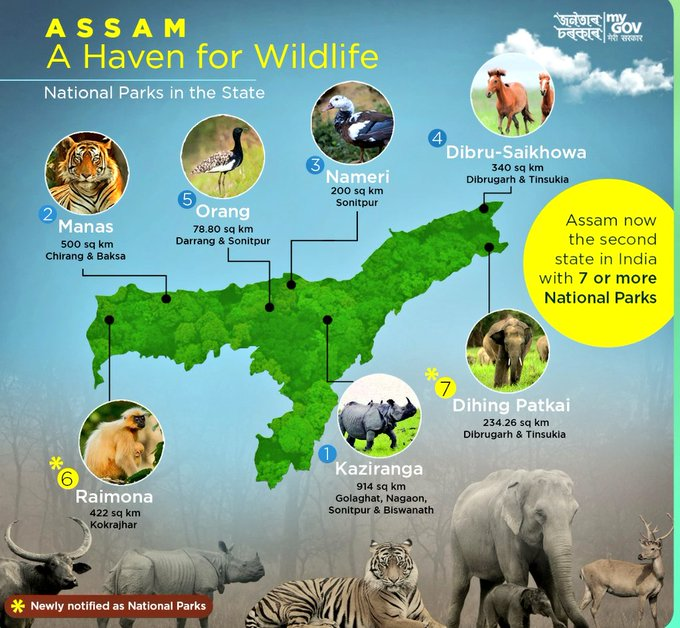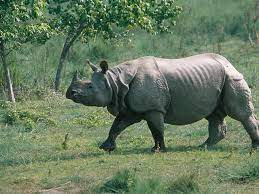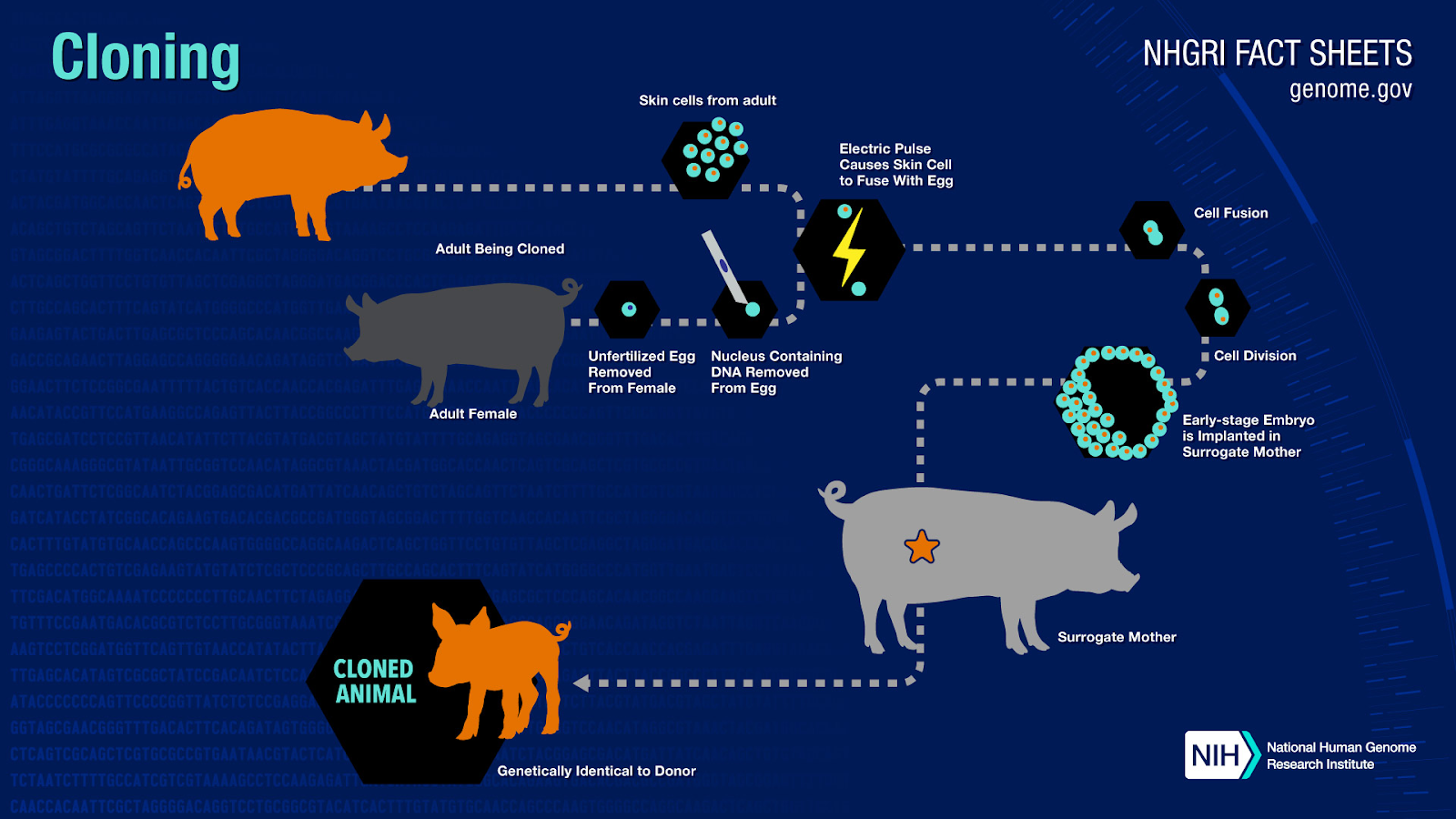Agriculture
National Mission on Natural Farming
For Prelims: National Mission on Natural Farming, Biomass Mulching, India's Gross Cropped Area (GCA), Indian Council of Agriculture Research (ICAR), Bhartiya Prakritik Krishi Paddati, Rainwater harvesting.
For Mains: Significance of Natural Farming, Issues Related to Natural Farming.
Why in News?
The Government of India has launched the National Mission on Natural Farming (NMNF) as a separate and independent scheme to promote chemical-free and climate-smart agriculture.
What is the National Mission on Natural Farming?
- About:
- The National Mission on Natural Farming (NMNF) has been formulated by upscaling the Bhartiya Prakritik Krishi Paddhati (BPKP) to promote natural farming across the country.
- Coverage:
- NMNF will cover a 7.5 lakh hectare area by developing 15,000 clusters. The farmers willing to implement natural farming on their field will be registered as cluster members, each cluster shall comprise 50 farmers or more with 50-hectare land.
- Also, each cluster can fall into one village or spread across 2-3 nearby villages under the same gram panchayat.
- NMNF will cover a 7.5 lakh hectare area by developing 15,000 clusters. The farmers willing to implement natural farming on their field will be registered as cluster members, each cluster shall comprise 50 farmers or more with 50-hectare land.
- Financial Assistance:
- Under NMNF, farmers will receive a financial assistance of ₹15,000 per hectare per year for three years for the creation of on-farm input production infrastructure.
- However, the incentives would be provided to farmers only when they commit to natural farming and have actually taken it up.
- If a farmer defaults or does not continue with natural farming, subsequent instalments shall not be disbursed.
- Web Portal for Implementation Progress:
- A Web portal has also been launched for the promotion of natural farming with information on the implementation framework, resources, implementation progress, farmer’s registration, blog, and so on.
- Master Trainers:
- The agriculture ministry is undertaking large-scale training of master trainers, ‘champion’ farmers and practising farmers in the techniques of natural farming through the National Institute of Agricultural Extension Management (MANAGE) and National Centre of Organic and Natural Farming (NCONF).
- Establishment of BRCs:
- The Centre intends to set up 15,000 Bhartiya Prakritik Kheti Bio-inputs Resources Centres (BRCs) to provide easy access to bio-resources wherein cow dung and urine, neem and bioculture play an important role.
- These bio-input resource centres would be set up alongside the proposed 15,000 model clusters of natural farming.
- The Centre intends to set up 15,000 Bhartiya Prakritik Kheti Bio-inputs Resources Centres (BRCs) to provide easy access to bio-resources wherein cow dung and urine, neem and bioculture play an important role.
What is Natural Farming?
- About:
- Natural farming is a chemical-free farming method based on locally available resources.
- It promotes traditional indigenous practices, which give freedom to farmers from externally purchased inputs.
- The major stress of natural farming is on-farm biomass recycling with biomass mulching, use of on-farm desi cow dung-urine formulation, managing pests through diversity, on-farm botanical concoctions, and exclusion of all synthetic chemical inputs directly or indirectly.
- Natural farming is a chemical-free farming method based on locally available resources.
- Significance:
- Ensures Better Health: As Natural Farming does not use any synthetic chemicals; health risks and hazards are eliminated.
- Food has higher nutrition density and therefore offers better health benefits.
- Increased Farmers’ Income: Natural Farming aims to make farming viable and aspirational by increasing net incomes of farmers on account of cost reduction, reduced risks, similar yields, incomes from intercropping.
- Rejuvenates Soil Health: The most immediate impact of Natural Farming is on the biology of soil—on microbes and other living organisms such as earthworms.
- It improves soil health and in turn increases productivity.
- Ensures Better Health: As Natural Farming does not use any synthetic chemicals; health risks and hazards are eliminated.
- Issues:
- Lack of Irrigation Facility: Only 52% of India's Gross Cropped Area (GCA) is irrigated at the national level. Even though India has made significant strides since independence, many farms still rely on the monsoon for irrigation, limiting their ability to plant more crops.
- Lack of Readily Availability of Natural Inputs: Farmers often cite the lack of readily available natural inputs as a barrier to converting to chemical-free agriculture. Not every farmer has the time, patience, or labour to develop their own natural inputs.
- Lack of Crop Diversification: In spite of the rapid commercialization of agriculture in India, most farmers assume cereals will always be their main crop (due to skewed Minimum Support Prices in favour of cereals) and ignore crop diversification.
- Other Initiatives to Promote Natural Farming:
- Paramparagat Krishi Vikas Yojana (PKVY):
- The NMNF is an upscaling of the Bhartiya Prakritik Krishi Paddati (BPKP) which is a sub-scheme under Paramparagat Krishi Vikas Yojana (PKVY).
- PKVY provides financial assistance to farmers who want to adopt organic farming practices and encourages them to use eco-friendly techniques for pest management and soil fertility management.
- Climate Smart Agriculture:
- Climate smart agriculture is an integrated approach to managing landscapes-cropland, livestock, forests, and fisheries-that address the interlinked challenges of food security and climate change.
- It aims to tackle three main objectives: sustainably increasing agricultural productivity and incomes, adapting and building resilience to climate change, and reducing greenhouse gas emissions wherever possible.
- Paramparagat Krishi Vikas Yojana (PKVY):
UPSC Civil Services Examination, Previous Year Question (PYQ)
Prelims
Q.1 How is permaculture farming different from conventional chemical farming? (2021)
- Permaculture farming discourages monocultural practices but in conventional chemical farming, monoculture practices are predominant.
- Conventional chemical farming can cause an increase in soil salinity but the occurrence of such phenomenon is not observed in permaculture farming.
- Conventional chemical farming is easily possible in semi-arid regions but permaculture farming is not so easily possible in such regions.
- Practice of mulching is very important in permaculture farming but not necessarily so in conventional chemical farming.
Select the correct answer using the code given below.
(a) 1 and 3
(b) 1, 2 and 4
(c) 4 only
(d) 2 and 3
Ans: (b)
Q.2 Which of the following is the chief characteristic of ‘mixed farming’? (2012)
(a) Cultivation of both cash crops and food crops
(b) Cultivation of two or more crops in the same field
(c) Rearing of animals and cultivation of crops together
(d) None of the above
Ans: (c)
Mains
Q.1 What are the present challenges before crop diversification? How do emerging technologies provide an opportunity for crop diversification? (2021)
Q.2 How has India benefited from the contributions of Sir M. Visvesvaraya and Dr. M. S. Swaminathan in the fields of water engineering and agricultural science respectively? (2019)


Governance
Swachh Bharat Mission-Urban
For Prelims: Swachh Bharat Mission-Urban, Garbage Free Cities (GFC)-Star rating, Union Budget 2023-24.
For Mains: Status of Swachh Bharat Mission-Urban, Issues Related to Waste Management in India.
Why in News?
The Minister for Housing and Urban Affairs recently said that Swachhata has become a foundational tenet in not just every govt scheme but also in the way of life of citizens.
- The Swachh Bharat Mission – Urban (SBM-U) was the first large-scale programme to instil the principle of Jan Bhagidari.
- Also, ‘Swachhotsav - 2023: Rally for Garbage Free Cities’ was held in New Delhi as part of India’s celebration of the International Day of Zero Waste 2023.
What is International Day of Zero Waste?
- The International Day of Zero Waste, observed for the first time on 30 March 2023 and is jointly facilitated by UNEP and UN-Habitat.
- It aims to raise awareness of the importance of zero waste and responsible consumption and production practices and urban waste management contributing to achieving sustainable development.
- The day calls on rethinking our practices and for embracing a circular economy as a key for addressing the triple planetary crisis of climate change, nature loss and pollution, and putting the planet, and humanity, on a path to health and prosperity.
What is the Status of Swachh Bharat Mission-Urban?
- Achievements:
- Open Defecation Free (ODF):
- Urban India has become Open Defecation Free (ODF), with all 4,715 Urban Local Bodies (ULBs) completely ODF.
- 3,547 ULBs are ODF+ with functional and hygienic community and public toilets, and 1,191 ULBs are ODF++ with complete faecal sludge management.
- Waste Processing:
- Waste Processing in India has gone up by over 4 times from 17% in 2014 to 75% in 2023, aided through 100% door-to-door waste collection in 97% wards and source segregation of waste being practised by citizens across almost 90% wards in all ULBs in the country.
- Garbage Free Cities:
- The Garbage Free Cities (GFC)-Star rating protocol launched in January 2018 has increased from only 56 cities in the first year to 445 cities till date, with an ambitious target of having at least 1,000 3-star GFC by October 2024.
- The 2023-24 budget has reinforced India's commitment to building a circular economy through an enhanced focus on scientific management of dry and wet waste.
- The Garbage Free Cities (GFC)-Star rating protocol launched in January 2018 has increased from only 56 cities in the first year to 445 cities till date, with an ambitious target of having at least 1,000 3-star GFC by October 2024.
- Women in Spotlight:
- Rally for Garbage Free Cities:
- The Rally for Garbage Free Cities is a women-led Jan Andolan, where lakhs of citizens have taken on the responsibility of cleaning their streets, neighbourhoods, and parks.
- ‘Stories of Change' Compendium:
- The 'Stories of Change' Compendium captures some of the amazing on-ground successes of more than 300 women Self-Help Group members who have travelled across cities to learn various waste management models.
- 4 lakh women are directly engaged in sanitation and waste management as an enterprise in urban India, providing dignity and livelihood opportunities for women.
- Rally for Garbage Free Cities:
- Open Defecation Free (ODF):
- Challenges:
- Lack of Waste Management Infrastructure: India has a shortage of infrastructure and resources to manage waste effectively. Many cities lack adequate landfill sites, waste processing facilities, and waste collection systems.
- For example - the Ghazipur landfill in Delhi, which has exceeded its capacity causing air and water pollution and posing a health hazard to nearby residents.
- Unsustainable Packaging: The popularity of online retail and food delivery apps, though restricted to big cities, is contributing to the rise in plastic waste.
- E-commerce companies too have come under fire for excess use of plastic packaging.
- Also, there are usually no disposal instructions included with packaged products.
- Lack of Data Collection Mechanism: India lacks time series data or panel data in connection with solid or liquid waste.
- So it is very difficult for the waste planners of the country to analyse the economy of waste management.
- Lack of Waste Management Infrastructure: India has a shortage of infrastructure and resources to manage waste effectively. Many cities lack adequate landfill sites, waste processing facilities, and waste collection systems.
Way Forward
- City Composting Centers: Composting centres can be established in cities to reuse organic waste, which will enhance soil carbon content and eliminate the need for chemical fertilisers.
- Compost will also help in carbon dioxide sequestration by storing carbon back into the soil.
- Extended Producer Responsibility: There is a need to devise the mechanism for Extended Producer Responsibility in India to ensure that product manufacturers are made financially responsible for various parts of the life cycle of their products.
- It includes take-back, recycling and final disposal at the end of their useful life, in a way promoting circular economy.
- Behavioural Change Towards Waste and Waste-Pickers: Waste is often viewed as useless, and waste collectors are often isolated. There is a need to change this perception and look at proper waste management.
- Also, ULBs should reward waste pickers by providing incentives and spreading awareness to the public regarding their social inclusion.
- The inclusion of waste pickers is crucial not only for their own health and livelihoods, but for the economies of municipalities as well.
UPSC Civil Services Examination, Previous Year Question (PYQ)
Q. As per the Solid Waste Management Rules, 2016 in India, which one of the following statements is correct? (2019)
(a) Waste generator has to segregate waste into five categories.
(b) The Rules are applicable to notified urban local bodies, notified towns and all industrial townships only
(c) The Rules provide for exact and elaborate criteria for the identification of sites for landfills and waste processing facilities.
(d) It is mandatory on the part of the waste generator that the waste generated in one district cannot be moved to another district.
Ans: (c)


Internal Security
UAPA Tribunal Upholds Centre’s Decision to Ban PFI
For Prelims: major provisions of UAPA, UAPA Tribunal.
For Mains: role of non-state actors in creating challenges to internal security, growth of extremism, govt. Response.
Why in News?
Recently, five months after its constitution, the Unlawful Activities (Prevention) Tribunal upheld the Centre's decision to ban Popular fronts of India and its affiliates.
What is the Background of the Issue?
- In September 2022, the Ministry of Home Affairs (MHA) in a gazette notification declared the PFI an “unlawful association” along with “its associates or affiliates or fronts.
- The notification issued by the MHA imposed a ban on the PFI and its associate organizations, including the Rehab India Foundation (RIF) and Campus Front of India, for five years under the Unlawful Activities (Prevention) Act (UAPA), 1967.
What is UAPA?
- About:
- The UAPA is aimed at prevention of unlawful activities association in India. Its main objective is dealing with activities directed against the integrity and sovereignty of India. It is also known as Anti-terror law.
- Unlawful activities refer to any action taken by an individual or association intended to disrupt the territorial integrity and territorial sovereignty in India.
- The act assigns absolute power to the central government and provides for death penalty and life imprisonment as the highest punishments.
- The UAPA is aimed at prevention of unlawful activities association in India. Its main objective is dealing with activities directed against the integrity and sovereignty of India. It is also known as Anti-terror law.
- Major Provisions of the UAPA:
- UAPA provides special procedures to deal with terrorist activities, among other things; the central government may designate an individual/organization as a terrorist/terrorist organization if it:
- Commits/participates in acts of terrorism,
- Prepares for terrorism,
- Promotes terrorism, or
- Is otherwise involved in terrorism.
- Under the Act, an investigating officer is required to obtain the prior approval of the Director General of Police to seize properties that may be connected with terrorism.
- Additionally, if the investigation is conducted by an officer of the National Investigation Agency (NIA), the approval of the Director General of NIA would be required for seizure of such property.
- It empowers the officers of the NIA, of the rank of Inspector or above, to investigate cases in addition to those conducted by officers of the rank of Deputy Superintendent or Assistant Commissioner of Police or above
- UAPA provides special procedures to deal with terrorist activities, among other things; the central government may designate an individual/organization as a terrorist/terrorist organization if it:
- Procedure Followed:
- The declaration of an association as unlawful is communicated through a gazette notification and by affixing a copy on the association's offices or through loudspeakers in the area where the association conducts its activities.
- The notification remains valid for five years from the date of publication, subject to the tribunal's order under the UAPA.
- When the Centre declares an organization as unlawful, a tribunal is established by the Center to further investigate and confirm whether the decision is justified.
- The notification by the Centre does not take effect until the tribunal confirms the declaration and the order is published in the official gazette.
- The government must send the notification to the tribunal within 30 days of issuing the gazette notification to have the ban ratified.
- Additionally, the MHA must refer to the Tribunal along with the cases that the NIA, Enforcement Directorate, and state police forces have registered against the association and its members across the country.
- The declaration of an association as unlawful is communicated through a gazette notification and by affixing a copy on the association's offices or through loudspeakers in the area where the association conducts its activities.
What is the UAPA Tribunal?
- The UAPA provides for a tribunal to be constituted by the government for its bans to have long-term legal sanctity.
- It is headed by a retired or sitting judge of a High Court.
- On receiving notification from the Centre, the Tribunal calls upon the concerned association to show cause, within 30 days from the date of the service of such Centre’s notice, that why it should not be declared unlawful.
- After hearing arguments from both sides, the Tribunal can hold an inquiry to decide within 6 months whether there is sufficient evidence to declare an association unlawful association.
- Under the UAPA, the Centre's notification cannot have an effect until the tribunal confirms the declaration in its order.
What are the Criticisms of the UAPA?
- Lack Of Substantive and Procedural Process: Section 35 of UAPA allows government to list any individual as a terrorist. The government may do so, based on only major suspicion and without any process.
- The vague powers of State to detain and arrest individuals who it believes to be indulged in terrorist activities gives itself more powers vis-a-vis individual liberty guaranteed under Article 21 of the Constitution.
- Indirect Restriction on Right to Dissent: The right to dissent is a part and parcel of the fundamental right to free speech and expression and therefore, cannot be abridged in any circumstances except for mentioned in Article 19 (2).
- The Amendment to UAPA in 2019 empowered the ruling government, under the garb of curbing terrorism, to impose indirect restriction on the right to dissent which is detrimental for a developing democratic society.
- Time Consuming: In almost 43% of the cases, the charge sheet has taken more than a year or two to be filed. This has led to a delay in getting justice.
UPSC Civil Services Examination, Previous Year Question (PYQ)
Q. Analyze the multidimensional challenges posed by external state and non state actors to the internal security of India. Also discuss the measures required to be taken to combat these threats. (2021)
Q. Indian government has recently strengthened the anti-terrorist laws by amending UAPA 1967 and NIA act. Analyze the changes in the context of prevailing security environment while discussing scope and the reasons for opposing UAPA by human rights organizations. (2019)


Biodiversity & Environment
Rapidly Melting Antarctic Ice
For Prelims: Ocean overturning circulation, India’s Initiatives in Antarctica’s Context
For Mains: Impact of melting of ice on global ocean, India’s Initiatives in Antarctica, Deglaciation and Impacts, Rapid Ice-Melting and Sea-level Rise.
Why in News?
A study published in Nature has revealed that rapidly melting Antarctic ice is dramatically slowing down the flow of water through the world’s oceans, and could have a disastrous impact on global climate, marine food chain and on the stability of ice shelves.
What are the Key Highlights of the Report?
- Impact on World's Ocean:
- As temperatures rise and freshwater from Antarctica's melting ice enters the ocean, the salinity and density of the surface water are reduced, diminishing the downward flow to the sea's bottom.
- The study showed that warm water intrusions in the western Antarctic ice shelf would increase, but it did not look at how this might create a feedback effect and generate even more melting.
- The report found deepwater circulation in the Antarctic could weaken at twice the rate of decline in the North Atlantic.
- Also, deep ocean water flows from Antarctica could decline by 40% by 2050.
- Impact on Global Climate:
- The findings also suggest the ocean would not be able to absorb as much carbon dioxide as its upper layers become more stratified, leaving more CO2 in the atmosphere.
- Impact on Food Chain:
- Ocean overturning allows nutrients to rise up from the bottom, with the Southern Ocean supporting about three-quarters of global phytoplankton production, the base of the food chain.
- Slowing the sinking near Antarctica slows down the whole circulation and hence also reduces the amount of nutrients that get returned from the deep ocean back up to the surface.
- Ocean overturning allows nutrients to rise up from the bottom, with the Southern Ocean supporting about three-quarters of global phytoplankton production, the base of the food chain.
What are India’s Initiatives in Antarctica’s Context?
- Antarctic Treaty: India officially acceded to the Antarctic Treaty System on 1st August 1983. On 12 September 1983, India became the fifteenth Consultative Member of the Antarctic Treaty.
- Research Stations: The Dakshin Gangotri station (decommissioned) and the Maitri station, Bharti were established to carry out research in Antarctica.
- Establishment of NCAOR: The National Centre for Antarctic and Ocean Research (NCAOR) was established to counduct the country’s research activities in the Polar and Southern Ocean realms.
- Indian Antarctic Act 2022: It envisages regulating visits and activities to Antarctica as well potential disputes that may arise among those present on the continent.
- Other provisions of the act involve protecting mineral resources, protecting native plants, prohibition on introducing birds not native to Antarctica and provisions for Indian tour operators.
What about Deglaciation in the Rest of the World?
- Melting of Thwaites Glacier: Thwaites Glacier is 120 km wide, fast-moving glacier located in Antarctica.
- Because of its size (1.9 lakh square km), it contains enough water to raise the world sea level by more than half a metre.
- Its melting already contributes 4% to global sea-level rise each year.
- Ice Melting at Mt. Kilimanjaro: The ice cap on Africa's biggest peak, Tanzania's Mount Kilimanjaro, is among the famous glaciers predicted to melt by 2050 because of climate change.
- It has melted more than 80% since 1912.
- Retreating Himalayas: The Himalayan glaciers form the largest body of ice outside the polar caps and are the source of water for the innumerable rivers that flow across the Indo-Gangetic plains.
- Glaciers in the Himalaya are receding faster than in any other part of the world.
- The glaciers have been losing the equivalent of more than a vertical foot and half of ice each year since 2000; double the amount of melting that took place from 1975 to 2000.
UPSC Civil Services Examination, Previous Year Question (PYQ) :
Q. With reference to the water on the planet Earth, consider the following statements:
- The amount of water in the rivers and lakes is more than the amount of groundwater.
- The amount of water in polar ice caps and glaciers is more than the amount of groundwater. (2021)
Which of the statements given above is/are correct?
(a) 1 only
(b) 2 only
(c) Both 1 and 2
(d) Neither 1 nor 2
Ans: (b)


Science & Technology
Ultramassive Black Hole
For Prelims: Ultramassive Black Hole, Gravitational lensing, Black Hole, Hubble Space Telescope, Theory of Relativity.
For Mains: Types of Black Hole, Gravitational Lensing.
Why in News?
Astronomers have discovered an ultramassive black hole using gravitational lensing, a phenomenon where a foreground object bends light from a distant object behind it.
What led to the Discovery of an Ultramassive Black Hole?
- Researchers used supercomputer simulations to simulate light from a distant galaxy travelling through the Universe, each simulation had a black hole of a different mass.
- The path taken by the light in one simulation matched the path seen in actual images captured by the Hubble Space Telescope, leading to the discovery of an ultramassive black hole in the foreground galaxy.
- The ultramassive black hole is over 30 billion times the mass of our Sun.
- This new approach using gravitational lensing could make it possible to study inactive black holes in distant galaxies.
- However, most black holes that are currently known are in an active state, pulling in matter from their surroundings and releasing energy as light, X-rays and other radiation.
What is a Black Hole?
- About:
- Black holes are regions of space-time where gravity is so strong that nothing, not even light, can escape from them.
- They are formed when a massive star collapses in on itself at the end of its life, creating an incredibly dense object with a gravitational pull that is so strong that it warps space-time around it.
- Types of Black Holes:
- Stellar Black Hole: It is formed by the collapse of a single massive star
- Intermediate Black Hole: Their masses are between 100 and 100,000 times that of the sun.
- Supermassive Black Hole: Their masses ranging from millions to billions of times that of the sun, found at the centres of most galaxies including our own Milky Way galaxy.
- Importance:
- Black holes are important for understanding the universe and its evolution.
- They play a role in the formation and evolution of galaxies and the distribution of matter throughout the universe.
- Studying black holes can also help us understand the fundamental properties of space, time, and gravity.
What is Gravitational Lensing?
- Gravitational lensing is a phenomenon where the path of light from a distant object is bent by the gravitational field of a massive object, such as a galaxy or a black hole.
- This bending of light can cause distant objects to appear distorted or magnified, depending on the alignment of the massive object and the observer.
- The effect of gravitational lensing was first predicted by Albert Einstein in his theory of general relativity, and has since been observed and studied by astronomers.
Conclusion
The discovery of this ultramassive black hole using gravitational lensing is an exciting development in the study of black holes. The technique used could lead to the discovery and study of more inactive black holes in distant galaxies.
UPSC Civil Services Examination, Previous Year Question (PYQ)
Q. Consider the following phenomena: (2018)
- Light is affected by gravity.
- The Universe is constantly expanding.
- Matter warps its surrounding space-time.
Which of the above is/are the prediction/predictions of Albert Einstein’s General Theory of Relativity, often discussed in media?
(a) 1 and 2 only
(b) 3 only
(c) 1 and 3 only
(d) 1, 2 and 3
Ans: (d)


Important Facts For Prelims
Brightest Gamma Ray Burst Detected
Why in News?
In October 2022, astronomers recorded the brightest gamma-ray radiation (named GRB 221009A) of all time, which could overturn a long-standing theory of GRB jets.
- The observation was conducted jointly by Center for Astrophysics, Harvard and Smithsonian’s Submillimeter Array (SMA) in Hawaii, the MeerKAT Array in South Africa, the US National Science Foundation’s Karl G Jansky Very Large Array (VLA) in New Mexico (USA), the Atacama Large Millimeter Array (ALMA) in Chile and NCRA’s Giant Metrewave Radio Telescope, India.
What is a Gamma-Ray Burst?
- About:
- Gamma-Ray Bursts are the most powerful class of explosions in the universe, and they occur when massive stars die.
- When a massive star collapses, it creates a black hole, and the energy released during this process produces jets of high-energy particles that travel almost at the speed of light.
- These jets pierce through the collapsing star, producing X-rays and gamma rays, which can be detected by observatories on Earth and in space.
- Types of GRBs:
- Long-duration gamma-ray bursts (LGRBs):
- LGRBs last for more than two seconds and are thought to be caused by the collapse of massive stars, known as supernovae.
- These explosions release a tremendous amount of energy and create a black hole at their center.
- LGRBs are the most common type of GRB and can be observed from distant galaxies.
- Short-duration gamma-ray bursts (SGRBs):
- SGRBs last for less than two seconds and are thought to be caused by the collision of two compact objects, such as neutron stars or a neutron star and a black hole.
- SGRBs are much rarer than LGRBs, are more difficult to observe and typically located closer to our galaxy.
- Long-duration gamma-ray bursts (LGRBs):
What is GRB 221009A?
- About:
- GRB 221009A was detected in October 2022, by NASA's Fermi Gamma-ray Space Telescope, Neil Gehrels Swift Observatory, and Wind spacecraft.
- The signal originated from the direction of the constellation Sagitta, and it took approximately 1.9 billion years to reach Earth.
- The 5-minute-long radiation pulse was the brightest GRB ever and nearly 70 times brighter than any other such eruption ever observed.
- Observation from GRB 221009A:
- The pulse of radiation was unusually bright and long-lasting, which made it stand out from other gamma-ray bursts.
- The signal triggered detectors at multiple observatories, indicating its strength and duration.
- Researchers about 221009A:
- "Long-duration" GRBs occur when the core of a massive star collapses under its own weight, giving birth to a black hole.
- This formation produces powerful plasma jets that shoot gamma rays at almost the speed of light. When these jets collide with the gas surrounding the dying star, a bright afterglow is produced across the spectrum.
- Significance:
- Astronomers from the National Centre for Radio Astrophysics in India concluded that the signal was a birth cry of a black hole.
- GRB 221009A provides astronomers with valuable insights into the formation of black holes and the mechanisms that produce gamma-ray bursts.
- The detection of GRB 221009A will help astronomers refine their understanding of the conditions required for the formation of black holes and the production of gamma-ray bursts.
UPSC Civil Services Examination, Previous Year Question (PYQ)
Q. Recently, scientists observed the merger of giant ‘blackholes’ billions of light-years away from the Earth. What is the significance of this observation? (2019)
(a) ‘Higgs boson particles’ were detected.
(b) ‘Gravitational waves’ were detected.
(c) Possibility of inter-galactic space travel through ‘wormhole’ was confirmed.
(d) It enabled the scientists to understand ‘singularity’.
Ans: (b)


Important Facts For Prelims
Derecognition and Deregistration of Political Parties
Why in News?
Recently, a state party asked the Election Commission of India (ECI) not to derecognise the party in Andhra Pradesh.
What does Derecognition of Political Parties mean?
- About:
- Derecognition refers to the withdrawal of recognition of a political party by the ECI.
- Such parties are simply declared as registered-unrecognized parties.
- The ECI has the power to derecognize a political party if it violates the provisions of the Indian Constitution or the Representation of the People Act, 1951.
- Derecognition refers to the withdrawal of recognition of a political party by the ECI.
- Grounds for Derecognition of a Political Party as National party (as per ECI):
- If the party fails to secure at least 6% of the total votes polled in the general election to the LS or the legislative assembly of the state concerned, and if it fails to have at least 4 MPs elected in the last LS polls (also, it doesn't win 1 seat in the LS from the same state.); or
- If it has won at least 2% of the total seats in the LS from at least 3 states.
- If it fails to secure 8% of the total valid votes polled in the state at a General Election to the LS from the state or to the State LA.
- If the party fails to submit its audited accounts to the ECI on time.
- If the party fails to hold its organizational elections on time.
How does Derecognition of Parties differ from Deregistration?
- About:
- Deregistration refers to the cancellation of the registration of a political party. However, the ECI is not empowered to de-register parties.
- Once a political party is deregistered, it cannot contest elections.
- Grounds for Deregistration of a Political Party:
- A party can only be de-registered if:
- Its registration was obtained by fraud;
- It is declared illegal by the Central Government; or
- A party amends its internal Constitution and notifies the ECI that it can no longer abide by the Indian Constitution.
- A party can only be de-registered if:
What is the Representation of People Act 1951?
- About:
- It regulates the actual conduct of elections and by-elections, provides administrative machinery for conducting elections, deals with the registration of political parties, specifies the qualifications and disqualifications for membership of the Houses, provides provisions to curb corrupt practices and other offences.
- RPA and Political Parties:
- Every association or body in order to become a political party must be registered with the ECI whose decision regarding registration will be final.
- The current rulebook allows EC to register parties but does not allow for deregistration.
- No provision in the RPA 1951 provides any mechanism for de-registration of a political party.
- The Parliament may have deliberately omitted vesting the ECI with this power to ensure its independence and unbiasedness in terms of organising free and fair elections.
- The ECI, however, has been demanding the power to regulate both registration and deregistration of political parties.
- No provision in the RPA 1951 provides any mechanism for de-registration of a political party.


Rapid Fire
Rapid Fire Current Affairs
OBCs & The Current Conflict
A nationwide campaign is taking place against an MP due to his remarks against the Other Backward Classes (OBCs) following which he has also been convicted of defamation and was disqualified from Parliament.
The Kalelkar Commission (1953), was the first to identify backward classes other than the SCs and STs at the national level. Based on the recommendation of the Second Backward Classes Commission (Mandal Commission), the Government of India in August 1990 had notified 27% reservation for Socially and Educationally Backward Classes (SEBCs) (or OBCs) in vacancies for civil posts and services that are to be filled on direct recruitment.
After this was challenged, the Supreme Court in November, 1992 (Indira Sawhney case) upheld 27% reservation for OBCs, subject to exclusion of the creamy layer.
The Justice Rohini committee was constituted in 2017 to submit its report on Sub-categorisation of Other Backward Classes (OBCs). The committee is yet to submit its report.
Read More: Defamation Law and Disqualification of MPs, Indira Sawhney Judgment (1992)
Rhino Poaching Cases in Assam
After zero cases of rhinoceros poaching were recorded in Assam in 2022, the first such case was reported recently. In 2021, the Assam Government constituted an Anti-Poaching Task Force.
There are five species of rhino – white and black rhinos in Africa, and the greater one-horned, Javan, and Sumatran rhino species in Asia.
Only the Great One-Horned Rhino is found in India. Also known as the Indian rhino, it is the largest of the rhino species. It is identified by a single black horn and a grey-brown hide with skin folds. The species is restricted to small habitats in Indo-Nepal terai and northern West Bengal and Assam. The Great One-Horned Rhino is listed as Vulnerable in IUCN Red List, mentioned in Appendix I in CITES and in Schedule I of the Wildlife Protection Act, 1972.
Read More: Rhinos and Protect Areas in Assam, Infographic on Rhino
India's First Cloned Female Calf
Due to the government push for increasing milk production, the National Dairy Research Institute (NDRI), Karnal, Haryana has produced the India's first cloned female calf of the desi breed Gir.
Under a project by NDRI, the state will work on cloning of indigenous cow breeds such as Gir and Sahiwal. Indigenous cattle breeds such as Gir, Sahiwal, Tharparkar, and Red-Sindhi, play a pivotal role in milk production and the growth of the Indian dairy industry.
Gir cattle are also very popular and have been exported to Brazil, the United States, Mexico, and Venezuela for the development of zebu cows.
The term cloning describes a number of different processes that can be used to produce genetically identical copies of a biological entity. The copied material, which has the same genetic makeup as the original, is referred to as a clone.
Read More: India’s Dairy & Livestock Sector
AFINDEX-2023
The 2nd edition of the joint military exercise “the Africa-India Field Training Exercise (AFINDEX-2023)” concluded recently in Maharashtra. The strategically significant India-Africa Army Chiefs Conclave was also hosted in Pune.
The exercise was held from 16 to 29 Mar 2023. A total of 25 nations of the African continent with 124 participants and Indian troops from the Sikh, Maratha and Mahar Regiments participated in the multinational exercise.
The multinational military drill was aimed at promoting the idea of Africa-India Militaries for Regional Unity (AMRUT) and focused on incorporating the current dynamics of UN Peacekeeping Forces (UNPKF) through practical and comprehensive discussions and tactical exercises.
Read More: India-Africa Relations










